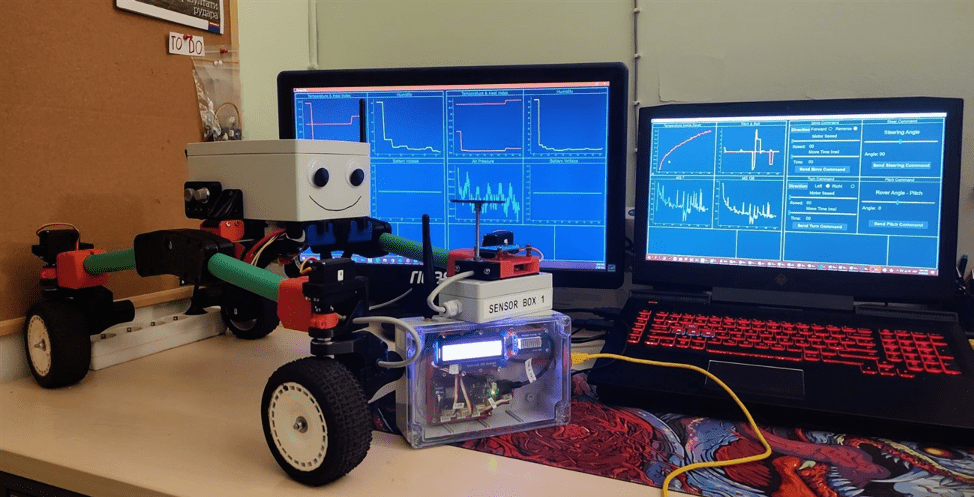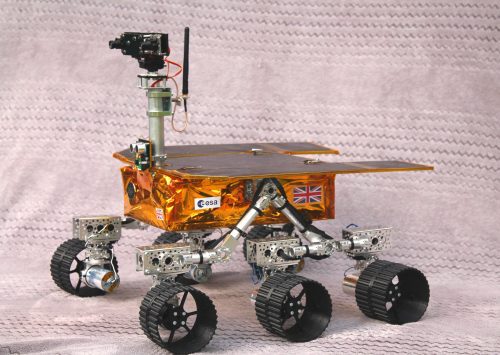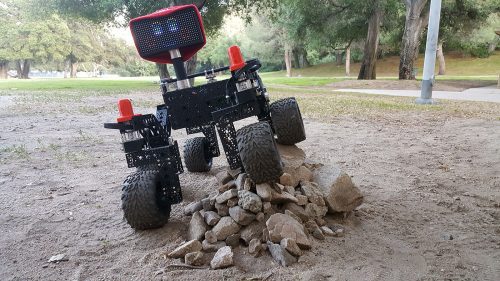Schlagwort: rover
-

This MKR WAN 1300-powered rover was inspired by the orb-weaver spider
Reading Time: 2 minutesArduino Team — April 11th, 2022 Orb-weaver spiders are often found in gardens and are famous for the intricate webs they spin to catch pre, and as the name implies, this web is in the shape of a circle. In keeping with the theme, element14 user Miloš Rašic had the idea to build a…
-

NASA, Raspberry Pi and a mini rover
Reading Time: 4 minutesNASA scientist Dr Jamie Molaro plans to conduct potentially ground-breaking research using a Raspberry Pi seismometer and a mini rover. Jamie has been working on a payload-loaded version of NASA’s Open Source Rover In the summer of 2018, engineers at NASA’s Jet Propulsion Laboratory built a mini planetary rover with the aim…
-

Yuri 3 rover | The MagPi #82
Reading Time: 4 minutesIn honour of the 50th anniversary of the Apollo moon landing, this year’s Pi Wars was space-themed. Visitors to the two-day event — held at the University of Cambridge in March — were lucky enough to witness a number of competitors and demonstration space-themed robots in action. Among the most impressive was…
-

Build your own NASA Curiosity rover
Reading Time: 3 minutesPut together your own remote-controlled Curiosity rover with the help of the NASA Jet Propulsion Laboratory and a Raspberry Pi. Why wouldn’t you want one of these?! NASA Jet Propulsion Laboratory To educate the curious about the use of rovers in space, the Pasadena-based NASA Jet Propulsion Laboratory (JPL) built a mini-rover, ROV-E, to…



